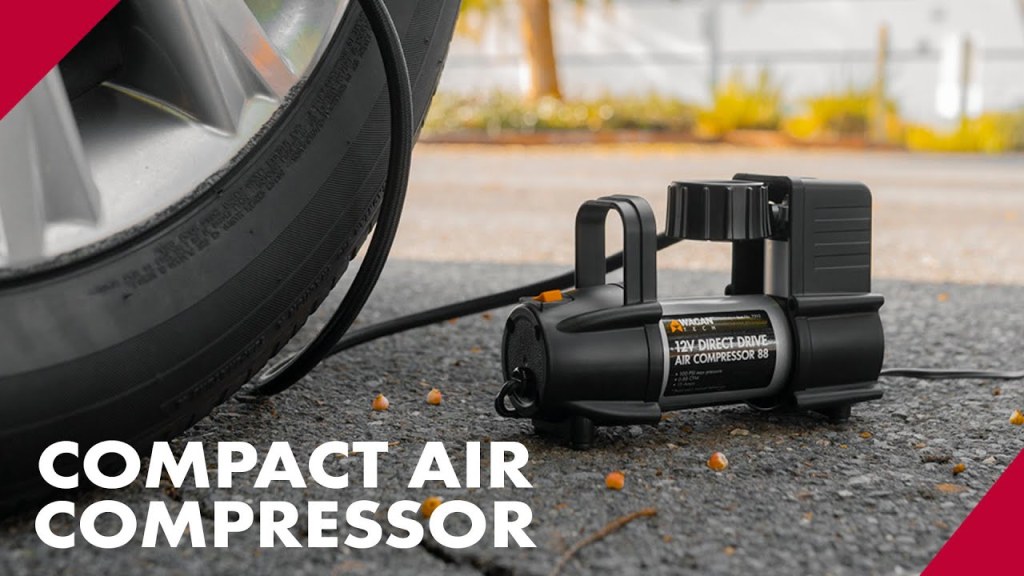Mastering The Art Of Using An Air Compressor For Car: Your Ultimate Guide To Effortless Tire Inflation
How to Use an Air Compressor for Your Car: A Comprehensive Guide
Introduction
Hello, Car Enthusiasts! Are you looking to learn how to use an air compressor for your car? Look no further, as this comprehensive guide will walk you through the entire process. Whether you’re a seasoned car lover or just starting out, understanding how to properly use an air compressor is essential for maintaining your vehicle’s tire pressure and overall performance. So, let’s get started on this informative journey!
1 Picture Gallery: Mastering The Art Of Using An Air Compressor For Car: Your Ultimate Guide To Effortless Tire Inflation

Table of Contents
What is an Air Compressor?
Who Should Use an Air Compressor?
When Should You Use an Air Compressor?
Where to Use an Air Compressor?
Why Use an Air Compressor for Your Car?
How to Use an Air Compressor for Your Car
Advantages and Disadvantages of Using an Air Compressor for Your Car
Frequently Asked Questions
Conclusion
Final Remarks
What is an Air Compressor?

Image Source: ytimg.com
An air compressor is a mechanical device that converts power from an electric or gasoline engine into potential energy stored in compressed air. In the context of a car, an air compressor is used to inflate and maintain the appropriate tire pressure. It consists of a tank, a motor, a pressure gauge, and various valves and connectors.
How Does an Air Compressor Work?
An air compressor works by drawing air into its tank and pressurizing it. The compressed air is then released through a hose and nozzle, allowing you to inflate your car tires or perform other tasks that require compressed air.
Who Should Use an Air Compressor?
Using an air compressor for your car is beneficial for car owners, auto mechanics, or anyone who regularly maintains their vehicles. It is especially useful for those who frequently travel long distances or engage in off-road adventures, as maintaining proper tire pressure is crucial for optimal performance and safety.
When Should You Use an Air Compressor?
You should use an air compressor for your car whenever you notice that your tire pressure is below the recommended level. It is also a good practice to check your tire pressure regularly, especially before embarking on a long journey, as tire pressure tends to fluctuate with changes in temperature. Additionally, you may need to use an air compressor to inflate sports equipment or other inflatable items.
Where to Use an Air Compressor?
An air compressor can be used in various settings, including your home garage, gas stations, or any location equipped with a power source. It is important to ensure that the area is well-ventilated and free from flammable materials to prevent any accidents or damage.
Why Use an Air Compressor for Your Car?
Using an air compressor for your car offers several benefits. First and foremost, it allows you to maintain the recommended tire pressure, which improves fuel efficiency, extends tire life, and enhances overall handling and safety on the road. Additionally, having a portable air compressor can be a lifesaver in emergencies, such as when you encounter a flat tire in a remote area with no access to a service station.
How to Use an Air Compressor for Your Car
Now, let’s dive into the step-by-step process of using an air compressor for your car:
Step 1: Safety First
Before you begin, make sure to wear appropriate safety gear, such as safety glasses and gloves, to protect yourself from any potential hazards.
Step 2: Check the Air Compressor
Inspect the air compressor for any damage or leaks. Ensure that the power cord is in good condition, and the pressure gauge is functioning correctly.
Step 3: Prepare the Tire Valve
Remove the valve cap from the tire and check the valve for any debris or damage. If necessary, clean the valve using a soft cloth or tissue.
Step 4: Connect the Hose
Attach the hose securely to the air compressor’s outlet valve. Ensure a tight connection to prevent air leakage.
Step 5: Set the Desired Pressure
Using the pressure gauge on the air compressor, set the desired pressure level according to your car manufacturer’s recommendations. Refer to your vehicle’s manual or the sticker located on the driver’s side door jamb for the correct tire pressure.
Step 6: Inflate the Tire
Place the nozzle of the hose onto the valve stem and press it firmly to create an airtight seal. Activate the air compressor by turning it on and allow the tire to inflate. Monitor the pressure gauge to ensure you reach the desired pressure.
Step 7: Check the Pressure and Disconnect
Once you’ve reached the desired pressure, turn off the air compressor and remove the nozzle from the valve stem. Use a tire pressure gauge to double-check the tire pressure and adjust if necessary. Finally, replace the valve cap on the tire.
Advantages and Disadvantages of Using an Air Compressor for Your Car
Using an air compressor for your car comes with its own set of advantages and disadvantages. Let’s explore them in detail:
Advantages:
1. Easy and convenient way to maintain tire pressure
2. Improves fuel efficiency
3. Extends tire lifespan
4. Enhances vehicle performance and safety
5. Portable and can be used in emergencies
Disadvantages:
1. Initial investment cost
2. Requires regular maintenance and cleaning
3. Some air compressors can be noisy
4. Possibility of overinflating tires if not careful
5. Limited usage beyond tire inflation
Frequently Asked Questions
1. Can I use any air compressor for my car?
Yes, as long as the air compressor is capable of reaching the desired pressure and has the appropriate connectors for your car’s valve stem.
2. How often should I check my car’s tire pressure?
It is recommended to check your car’s tire pressure at least once a month or before long trips.
3. Can I overinflate my car tires with an air compressor?
Yes, it is possible to overinflate your car tires if you are not careful. Always refer to the recommended tire pressure and use a tire pressure gauge to avoid overinflation.
4. Can an air compressor be used for other purposes?
Yes, an air compressor can be used for various tasks such as inflating sports equipment, pneumatic tools, and even cleaning dusty areas.
5. How long do air compressors typically last?
The lifespan of an air compressor depends on various factors, including usage, maintenance, and quality of the compressor. On average, a well-maintained air compressor can last for several years.
Conclusion
Using an air compressor for your car is a practical skill that every car enthusiast should possess. By maintaining the correct tire pressure, you can enhance your vehicle’s performance, fuel efficiency, and safety. Remember to follow the step-by-step guide outlined in this article and adhere to the recommended tire pressure provided by your car manufacturer. Embrace the convenience and versatility of an air compressor, and enjoy smoother rides and peace of mind on the road!
Final Remarks
Finally, it is worth noting that while using an air compressor for your car is generally safe and beneficial, always exercise caution and follow the manufacturer’s instructions. Keep in mind that overinflating tires can lead to tire blowouts, and improper handling of the air compressor may cause injury or damage. If you are unsure or unfamiliar with using an air compressor, it is advisable to seek guidance from a professional or consult your vehicle’s manual. Stay safe, and happy driving!
This post topic: Used Car



